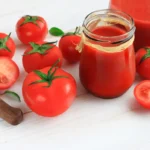Every caterer can make homemade tomato juice using the method that calls for a blender because it is easy to make and delicious. If you don’t like drinking newly squeezed juice, you may only need this cooking appliance for a few months each year, but it will securely and permanently occupy a rack in a locker. Though not as quickly, preparing tomato juice at home can be accomplished using a standard mixer or, more traditionally, a basic meat grinder and sieve.
I will share a homemade tomato juice formula with you today that is incredibly simple to prepare and far superior to anything you can purchase in a container!

ADVANTAGES OF TOMATO JUICE
The same is true of tomato juice; it has many health advantages as raw tomatoes. One cup (240 ml) of tomato juice includes:
- Nearly all the daily recommended amounts of vitamin C.
- More than 20% of the recommended amount of vitamin A.
- Numerous vitamins and minerals.
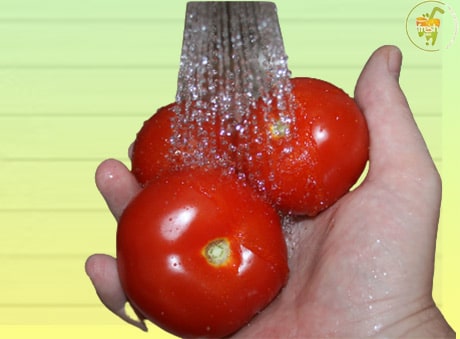
More specifically, tomato juice can enhance heart and eye health, and the juice’s carotenoids function as a powerful antioxidant, guarding against oxidative harm, lowering inflammation, and preventing some malignancies. Additionally, there is some proof that this substance could prevent blood clotting, includes vitamins and minerals beneficial for the health of our bones and epidermis, and detoxifies our systems by improving liver and kidney performance.
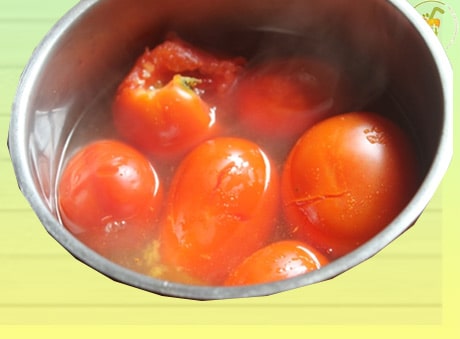
In reality, several studies have examined the impacts of daily tomato juice consumption on humans. Sadly, many store tomato juice choices are also dangerously high in sodium. Homemade tomato juice can be used for that.

Why you should go for Homemade Tomato Juice?
But don’t be deceived by this tomato juice recipe’s apparent ease. Here are three explanations for why homemade tomato juice is healthier than store-bought varieties, even though it’s fast and simple to prepare.
- Likely, the tomato juice labels you purchase in cans from the grocery store have several chemicals and preservatives intended to significantly increase the product’s storage life.
- A shocking amount of store-bought tomato juice products contain a lot of sugar. This dish allows you to reduce the amount of sugar in your food, particularly if you use reduced sweeteners like Stevia.
- Unlike this handmade version, commercially available canned tomato juices are frequently prepared with sodium.
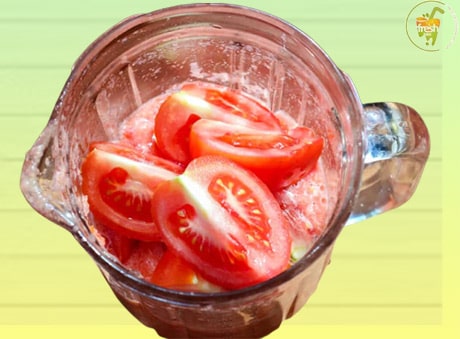
How To Prepare Tomato Juice At Home With A Blender
INGREDIENTS
- Tomatoes
- Salt
- Lemon juice in a container or citric acid
- A blade/ knife
- A blender
- Pantyhose or even a filter
- The tube/funnel
- Vessels for canning with closures

PROCESS
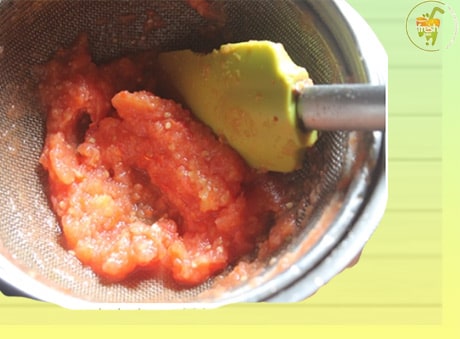
- Take some tomatoes that are extremely mature to begin.
- To start, completely cleanse the tomatoes because they might contain bugs and blemishes that will certainly affect the taste. The shells can be left on when cooking.
- Cook the vegetables with medium heat after chopping them into pieces. The tomatoes should be cooked for about 10 minutes or until tender. Transfer the liquid to a tomato juice blender after it has fully cooled. Until creamy, blend. Add honey, Tabasco Red Sauce, salt, and black pepper to the mixer, along with the diced tomatoes and celery. After blending until creamy, serve right away.

Nutrition In Juice:(100gm)
Calories: 18kcal | Carbohydrated:3.9gm |Protein: 1g | Fiber: 1.2g | Sugar: 2.6g | Fat(total): 0.2g| Water: 80%
PREPARATION TIME= 15 MIN
Best Blender For Tomato Juice
It’s time for an update, whether you use your blender to combine the occasional margarita or even a daily glass of tomato juice. The drinks didn’t even turn out all that smoothly. The finest blenders can crush even the toughest fruits and vegetables for smoothies, juice, nut milk, velvety stews, powdering granular sugar, and much more.
best commercial blenders for tomato juicing are:
- Breville 3X Bluicer
- Ninja Compact Kitchen System
- BlendJet2
WHAT TOMATOES WORK BEST FOR MAKING TOMATO JUICE?
Fresh tomatoes are ideal to use, just like in many other tomato dishes. Although the tomato you use is a matter of personal taste, commercially produced tomatoes are frequently inferior to organic tomatoes. Pesticides won’t be used on fresh fruit, so your tomato sauce won’t have an unpleasant chemical taste.
WHICH WAY SHOULD I KEEP THE JUICE AT HOME?
Tomato juice made from a blender can be kept at room temperature for a year or in the fridge for up to 18 months. You can freeze them to create handy portions of tomato puree, which you can easily dispense as needed. It would be best to use the juice shortly after storing it in the refrigerator. If your tomato juice starts to scent or looks rancid, it’s time to throw it out. It’s ideal to only produce as much juice as you require.
JUICING RECIPES USING A BLENDER: 1-Beet Root Recipe 2- Pomegranate Juice Recipe 3-Grape Juice Recipe 4- Apple Juice Recipe
JUICING RECIPES USING A JUICER: 1- Celery Cucumber Recipe 2- Celery Parsley juice Recipe 3-Celery Lime juice Recipe 4-Celery Spanish Juice Recipe 5-Celery Detox Vegetable juice recipe 6-Celery Ginger Juice Recipe

